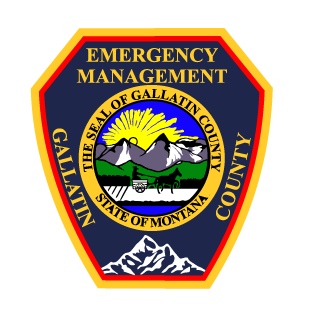
For immediate release: June 21, 2024
Media contact:
Patrick Lonergan, Gallatin County Chief of Emergency Management & Fire
406-548-0111
patrick@readygallatin.com
Gallatin County Receives Additional Funding to Support Wildfire Mitigation Efforts
Gallatin County has funding available to help residents in the Gallatin County Wildland Urban Interface reduce the risk of wildfire impacting their property.
Wildfire risk is present throughout Gallatin County with the severity and risk varying based on location. Through the process of developing the 2022 Gallatin County Hazard Mitigation and Community Wildfire Protection Plan, 1,000,107 acres have been identified as Wildland Urban Interface in the county. Studies have shown that treating the area within 100 to 200 feet of your home greatly reduces the potential impacts of a wildfire.
“You can take action to prevent the likelihood of your life or home being impacted by wildfire. And we can help you through that process,” said Jay Pape, Preparedness and Mitigation Manager with Gallatin County Emergency Management. “We can provide you with concrete steps you can take on your property and with as well as grant funding opportunities to help ease the costs.”
The first step is for property owners to self-evaluate their property. This is a quick way to see what may easily be done to reduce wildfire risk.
Residents can then request a FREE home risk assessment and Gallatin County staff will meet with homeowners on their property. The evaluator will review the self-assessment, walk around your property, and discuss what they are seeing. Following the in-person visit, owners will get a copy of the assessment.
A home risk assessment provides an opportunity to ask questions, receive more in-depth guidance, and learn about approaches to wildfire mitigation. Mitigation projects could range from hand thinning areas around homes and structures, to larger forest thinning type projects, depending on the property’s size and continuity with neighbors.
Many of the items identified during home risk assessments can be completed by homeowners. But in some cases, specialized skill or equipment may be needed. Homeowners can apply for a support that will offset their out-of-pocket expenses for any mitigation measures that may require more complex work. In some cases, work may be 100% funded with support form the Montana Resiliency Fund.
Montana’s investment in the Resiliency Fund makes a concerted effort to prevent costly repairs following a disaster by working with communities to mitigate potential damage risk prior to natural disasters. With this funding, MT DES works with local programs to apply for FEMA mitigation grants. FEMA grants typically require a 25% cost-share from the local government that is applying for the grant. Using this account, the state will be able to off-set the 25% local match. The 2023 legislature approved $4 million dollars a year for the next four years to the Resiliency Fund. By leveraging FEMA grants, this will result in a projected $64 million in disaster mitigation projects for Montana communities. The average disaster mitigation project has a 6:1 cost benefit, meaning this investment will save Montanan’s $384 million over the life of these projects.
Wildfire mitigation is not a one-time project, but an ongoing activity. Properties may need heavier initial work, but annual maintenance that will be needed to keep the wildfire risk reduced over time. Residents who take part in a mitigation project with Gallatin County are required to follow a treatment plan for 10 years.
Gallatin County’s wildfire mitigation program started in late 2022. We currently have four active funding programs covering several areas around the Gallatin Valley. Interest in the program drives future identified project areas.
This spring, the program added a three-person crew dedicated to helping homeowners conduct this mitigation work.
Residents interested in getting their property assessed can find a step-by-step guide to scheduling assessments, applying for grant funding, and much more, at this link.
###
